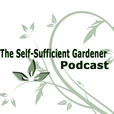
Summary: In today's episode I discuss Square Foot Gardening. This show is dedicated to all of the people that say: "I know you don't like _____". The truth is that personally I feel like after a few years any gardener can move past SFG but it certainly is a great learning tool and it really fits what some people like so I say whatever works - go for it! NOTE: Listener J. Kaiser pointed out in the comments that I made an error when calculating square feet. I wrongly reported that a square foot is a square with sides .32x.32 . I'm not sure if I was trying to do Cubic feet (?) or if I simply carried a decimal that didn't belong but anyway, yes a square 1x1 is 1 square foot. It didn't affect really any of the content but I felt it worth noting. * What is SFG - Essentially organizing a garden into 1x1 foot squares. Each square is not really a square foot that would be .32 x .32. The method (usually but not always) involves using a raised bed box and a soil mix that is made by the gardener. Pioneered by Mel Bartholomew. * Several steps: * Building the box. You build a bed – 4x4 is the recommended starter size. Usually treated lumber, 2x6 or 2x8. * The Bottom - It can have a weed barrier on the bottom or not. Some people use nothing. Some use cloth, some use cardboard or newspaper. Bartholomew suggests using a "weed barrier" beneath the box. Personally with any raised bed I tend to try to kill off the weeds first and then put the box over with no barrier or to use a barrier that will break down like cardboard. If you have problems with moles or gophers you can put chicken wire on the bottom. * Filling it - "Mel's mix," a combination by volume of one third of decayed Sphagnum "peat moss", one-third expanded vermiculite and one-third blended compost. * Planting into it - A grid is placed over the top usually. Cutting the 4x4 bed into 4 columns and 4 rows. Each plant has a recommended population per square. Beets: 16/sqft Broccoli: 1/sqft Cabbage: 1/sqft Carrots: 16/sqft http://www.essene.com/Vegetarian/PlantSpacingsInASquareFootGarden.htm (http://www.essene.com/Vegetarian/PlantSpacingsInASquareFootGarden.htm) * Advantages: Good for beginners, children or people with limitted access. Gives gardeners a good guide on how to start. Easy and confidence builder. Forces intensive gardening within the squares. Less compaction. Can add accessories. No fighting weeds. * Disadvantages: Cost is elevated. Forces segregation to a point. Space is not used well all the time. Tomatoes and zuchinni are hard fits. Takes gardener out of the garden. Dries out somewhat quickly. * Sustainability is questionable if you have to keep replenishing it from outside sources. Here are some ideas to make it sustainable and more permaculturish: *Refill it with compost you make on site. *Use natural materials for bed borders such as rocks or cedar logs. *Utilize the squares but as you learn mix it up. So each square might have multiple plantings with similar populations. *Utilize the edges. If you do plant something large find a way to utilize the space below it.
